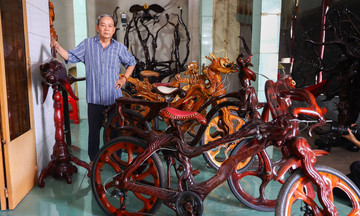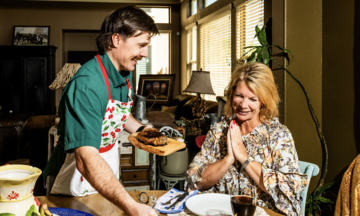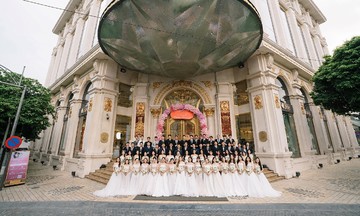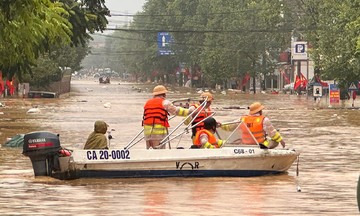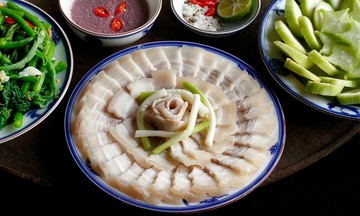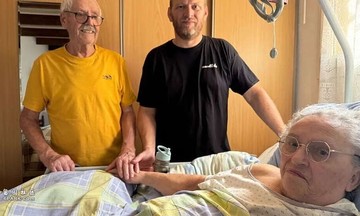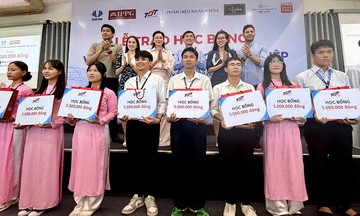Gently touching the time-worn suitcase, 80-year-old associate professor Nguyen Van Huy, former director of the Vietnam Museum of Ethnology, calls it a "treasure". This suitcase accompanied his mother, Vi Kim Ngoc, and the extended family of Governor Vi Van Dinh through 9 years of the protracted resistance war in Viet Bac. It encapsulates the story of a choice that changed the destiny of an entire family, a choice that contributed to the nation's history.
Vi Van Dinh, descended from 14 generations of tribal chiefs guarding the Lang Son border, was one of the most important officials of the royal court, having served as Governor of Thai Binh and Ha Dong. His children married the country's intellectual elite: his daughter Vi Kim Phu married medical professor Ho Dac Di, Vi Kim Ngoc married professor Nguyen Van Huyen, and his niece Vi Nguyet Ho married professor Ton That Tung.
Their lives before the August Revolution were filled with spacious villas, elegant parties, and literary discussions. But beneath this glamour lay the indignation of an honest official facing colonial oppression and the court's decay. In 1942, Vi Van Dinh resigned and returned to his hometown, refusing to cooperate with the French.
The stature and prestige of the family were such that, before leaving for the Fontainebleau Conference in France in 1946, amidst a precarious national situation, President Ho Chi Minh instructed Deputy Minister of Interior Hoang Huu Nam to invite Vi Van Dinh to Hanoi to prevent the French from recruiting him to establish an "Autonomous Nung Region".
The task seemed difficult, but when Hoang Huu Nam extended the invitation, Vi Van Dinh immediately accepted. The presence of him and his family alongside the resistance government became a symbol, strengthening the people's faith.
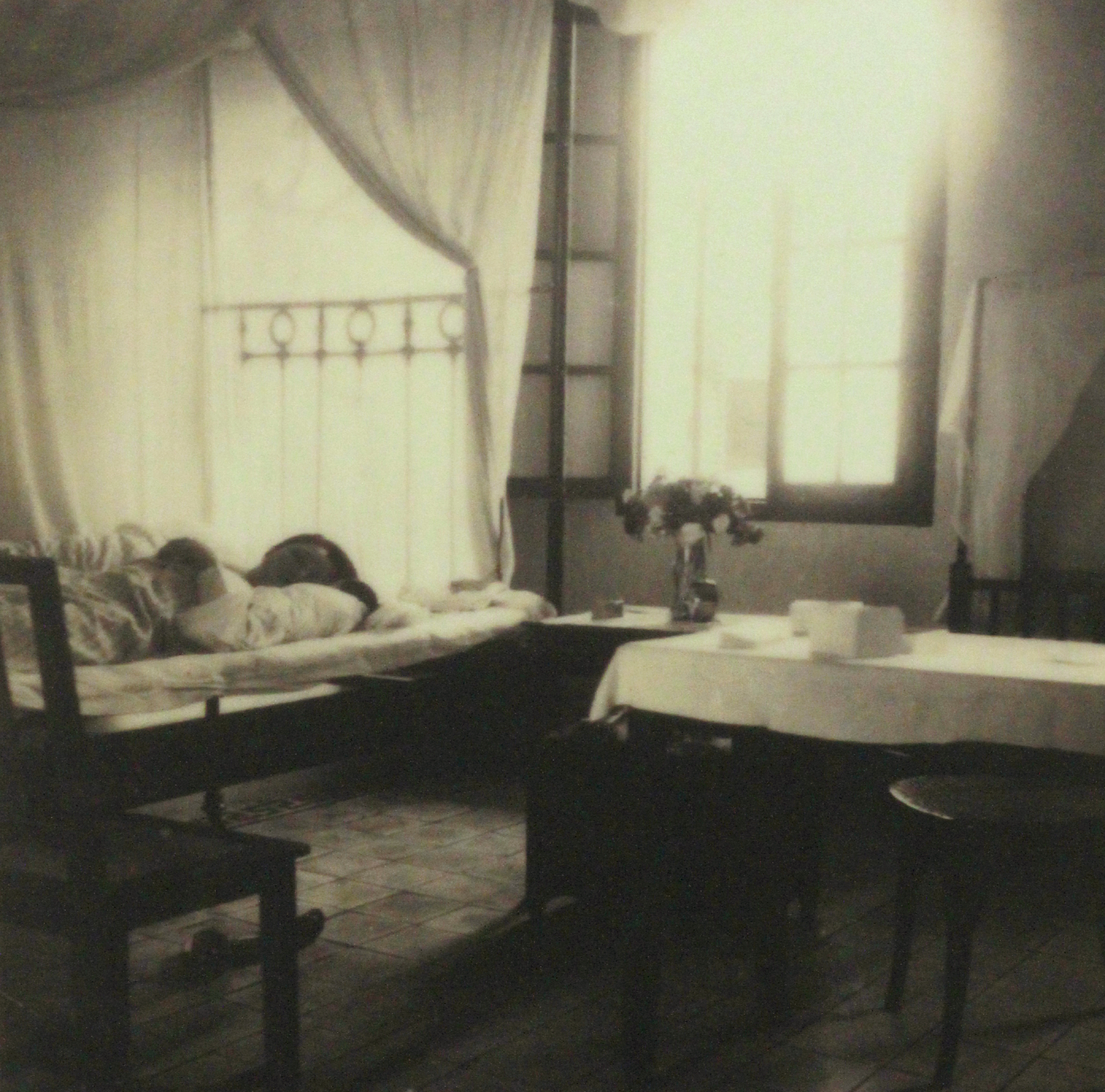 |
Vi Van Dinh's family at the wedding of his daughter Vi Kim Ngoc and Nguyen Van Huyen, Minister of Education from 1946-1975. Photo: Family archives |
Vi Van Dinh's family at the wedding of his daughter Vi Kim Ngoc and Nguyen Van Huyen, Minister of Education from 1946-1975. Photo: Family archives
The journey to Viet Bac
On the night of the nationwide resistance, 19/12/1946, a government vehicle secretly transported Vi Van Dinh and his wife to the resistance base. At the same time, his children and grandchildren, prominent intellectual families, received instructions from Prime Minister Pham Van Dong: "Take the children out of Hanoi so the government can deal with the French and Chinese. Return when the situation stabilizes."
In the Dinh Hoa (Thai Nguyen) resistance base and later in Tan Trao (Tuyen Quang), Vi Van Dinh lived near President Ho Chi Minh and Ton Duc Thang and was assigned various tasks to mobilize compatriots to join the revolution. His son, Vi Van Ky, also refused the French offer to become a provincial governor and joined the fight in Thanh Hoa. His grandsons all joined the National Guard, some joining the Southward Advance.
The evacuation was a life-or-death gamble. Wherever the enemy bombed, they fled. Children barely learned village names before having to rush to another. In some places, they crossed fresh blood pools. In others, they witnessed "scorched earth" tactics, with houses and roads destroyed to hinder the enemy.
Death was a constant companion. One afternoon near Phu Tho, the cry "Aircraft!" shattered the quiet. Everyone dove for cover. Ngoc could only clutch her 4 young children and her younger sibling close.
"Above, the drone of the 'old lady aircraft' circled. We lay in our mother's arms, under a Nam Dinh wool blanket, seeing only grass and green myrtle bushes," Nguyen Kim Nu Hanh, daughter of Minister Nguyen Van Huyen, wrote in her memoirs.
During a fierce raid in 1947 in Chiem Hoa, 3 families hid in the forest, the enemy's gunfire just a few dozen meters away. In the suffocating silence, baby Huy, just over a year old, suddenly cried. Almost instantly, his father, Minister Nguyen Van Huyen, slapped him. The child fell silent. The soldiers passed by without noticing.
"That was the only time my father hit me," Huy recounted, "And to this day, I still don't understand why that slap silenced me immediately." It was a slap of love, of absolute protection in the most extreme circumstances.
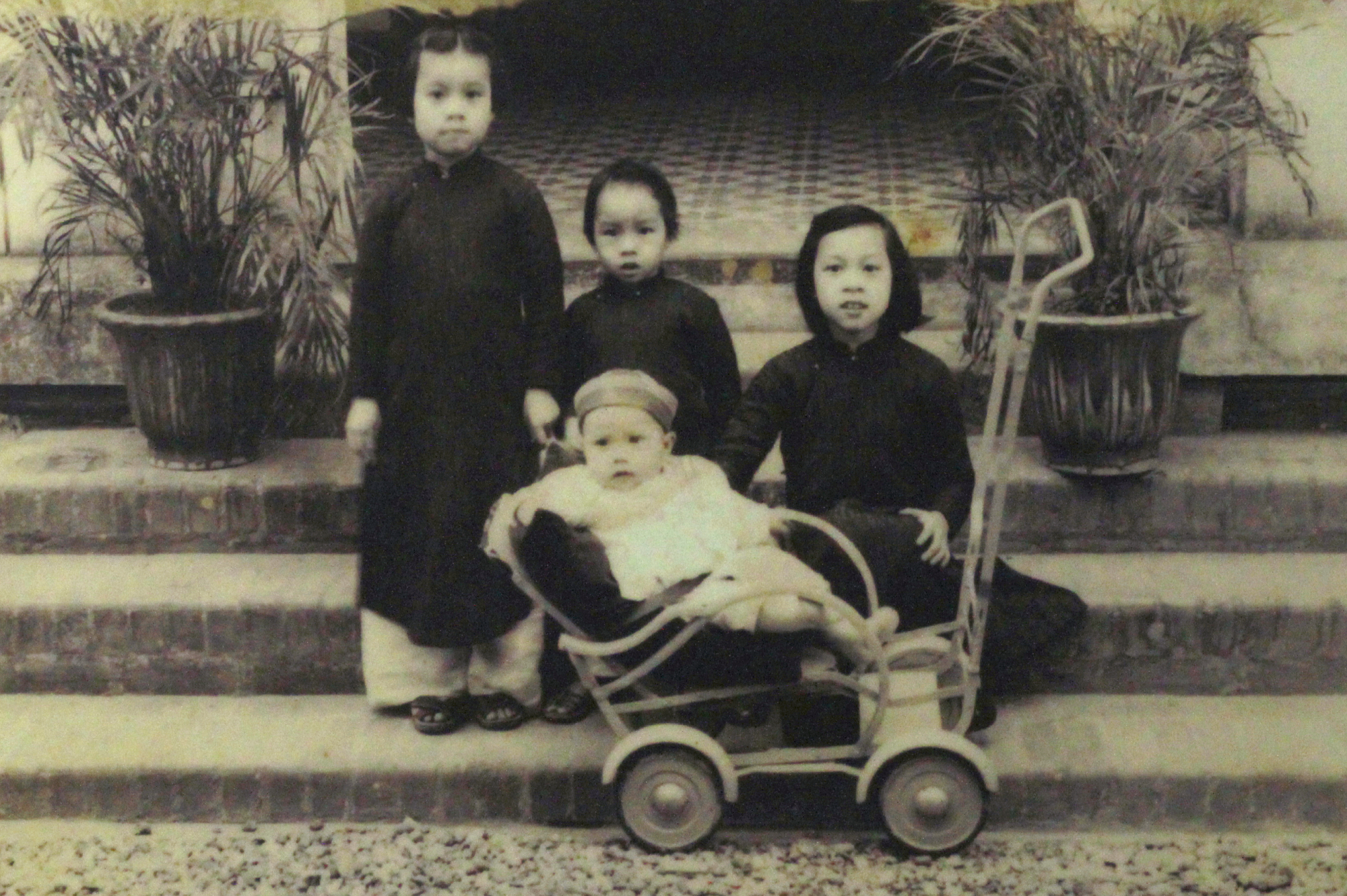 |
Vi Van Dinh (2nd from left) with Uncle Ho at the conference to unify the Viet Minh Front and Lien Viet in Chiem Hoa, Tuyen Quang in 1951. Photo: Family archives |
Vi Van Dinh (2nd from left) with Uncle Ho at the conference to unify the Viet Minh Front and Lien Viet in Chiem Hoa, Tuyen Quang in 1951. Photo: Family archives
By the 1950s, the families of Minister Nguyen Van Huyen and Professor Ho Dac Di lived together in a longhouse in Ai village (Chiem Hoa), about 100 meters from the stilt house of Ton That Tung's family. On the surrounding hillsides, the families of Dang Thai Mai, Tran Duy Hung, and Vo Nguyen Giap also gathered.
The longhouse of Huyen and Di frequently hosted guests like mathematician Le Van Thiem, philosopher Tran Duc Thao, and young general Hoang Minh Thao.
Nguyen Van Huy remembers Professor Thiem's fondness for water pipes, similar to Professor Di. The mischievous Ton That Bach once smeared soot around the pipe's rim. After the elders smoked, everyone had a black ring around their mouths, causing laughter throughout the longhouse.
Life in the resistance base was entirely self-sufficient. They grew cabbage and tomatoes around their houses, raised chickens and goats for milk for the children. The mothers managed their families, taught, and visited wounded soldiers, while the fathers shouldered the heavy responsibilities of the nation.
Professor Ho Dac Di, principal of the Resistance Medical University, tirelessly cared for the wounded, laying the first bricks for Vietnamese medicine.
Professor Ton That Tung, Deputy Minister of Health, trained doctors, cared for President Ho Chi Minh's health, and researched penicillin production with Professor Dang Van Ngu in difficult conditions.
Professor Nguyen Van Huyen, Minister of Education, implemented wartime education reforms, expanded universities, and traveled throughout North and Central Vietnam to eradicate illiteracy and develop schools.
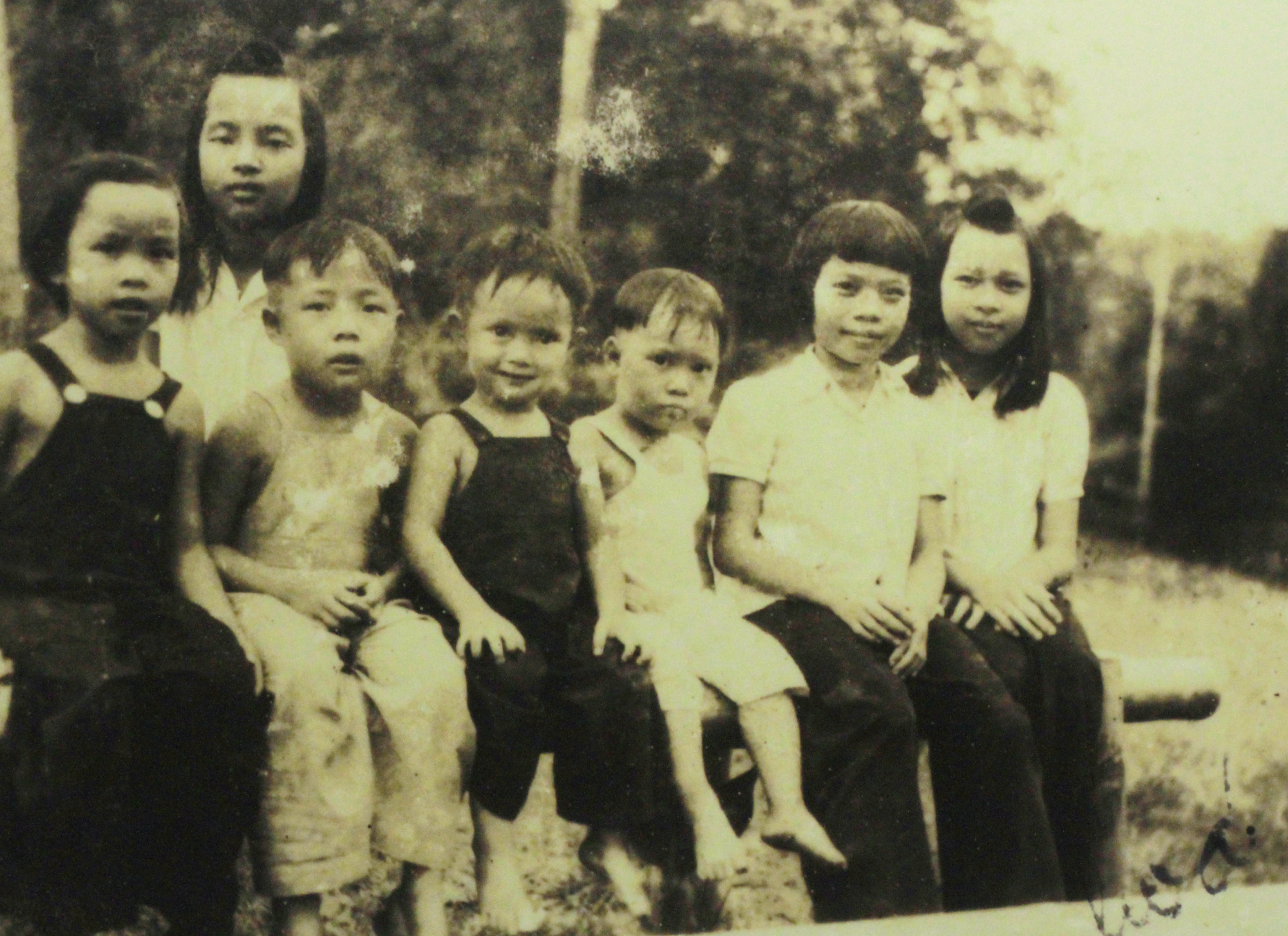 |
The families of professors Ton That Tung, Ho Dac Di, and Nguyen Van Huyen in Viet Bac. Photo: Family archives |
The families of professors Ton That Tung, Ho Dac Di, and Nguyen Van Huyen in Viet Bac. Photo: Family archives
Amidst the hardships of the resistance base, the greatest challenge came from young Nguyen Nu Kim Hieu's illness. In the remote jungle, Hieu suffered from persistent fever and swollen knees, later diagnosed as bone tuberculosis.
Without her husband, heartbroken for her child, and in dire circumstances, Vi Kim Ngoc could have returned to Hanoi for treatment. But she didn't. Faith in the revolution, in President Ho Chi Minh, and the nation's future helped her overcome the pain.
"The nation is in danger; the whole country is united to save it. Only by saving the country can we save our families. Children, endure the hardships! Suffer with your parents so that tomorrow you will be happy, no longer citizens of a lost nation, a nation of slaves," Ngoc wrote in her diary.
Without medicine, Professor Ton That Tung decided to treat Hieu's leg himself. Whenever enemy aircraft appeared, her sister, aunt, and niece took turns carrying Hieu to the shelter. More than once, after the bombing stopped, they rushed back to class, forgetting the little one in the shelter.
After 2 long years, on the day the cast was removed, dozens of people anxiously gathered. When the last layer was taken off, Hieu stood up, staggered, and took a step, then two, towards her mother. The mother embraced her child, overwhelmed with joy. Everyone cheered as if they had won a battle. The leg thought to be crippled was revived.
At the end of 1954, the Governor's extended family returned to Hanoi on rafts down the Red River, landing at Bac Co. 9-year-old Nguyen Van Huy remembers "never hearing so many car horns".
Initially, the 3 families lived together in a villa at 9 Le Thanh Tong street. Di's family lived on the first floor, Huyen and Tung's families on the second. The siblings and children continued to support each other as they did during the war.
As the nation celebrates its 80th National Day, the story of these individuals comes alive. The nation's great history is not something abstract but begins with the courageous choices of individuals and families, like Vi Van Dinh’s.
Standing beside the duralumin suitcase—the same material used for aircraft—in the family museum, Huy explains that it preserved many photos, diaries, and letters from the years of evacuation in Viet Bac.
See more photos of the family during their time in the resistance base.
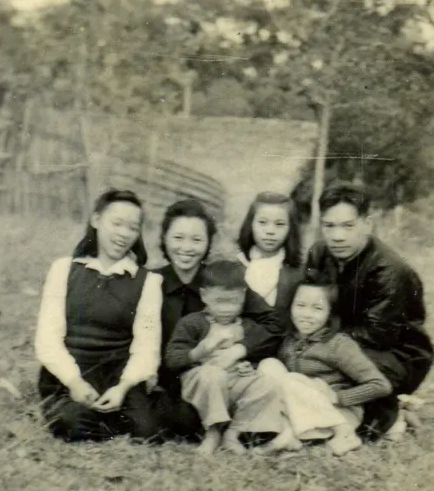 |
Before joining the revolution and Uncle Ho, Governor Vi Van Dinh's family, including his daughters-in-law and sons-in-law, were high-ranking officials and intellectuals of the time. This photo shows Vi Kim Ngoc's room when she gave birth to her first child, Nguyen Kim Nu Hanh.
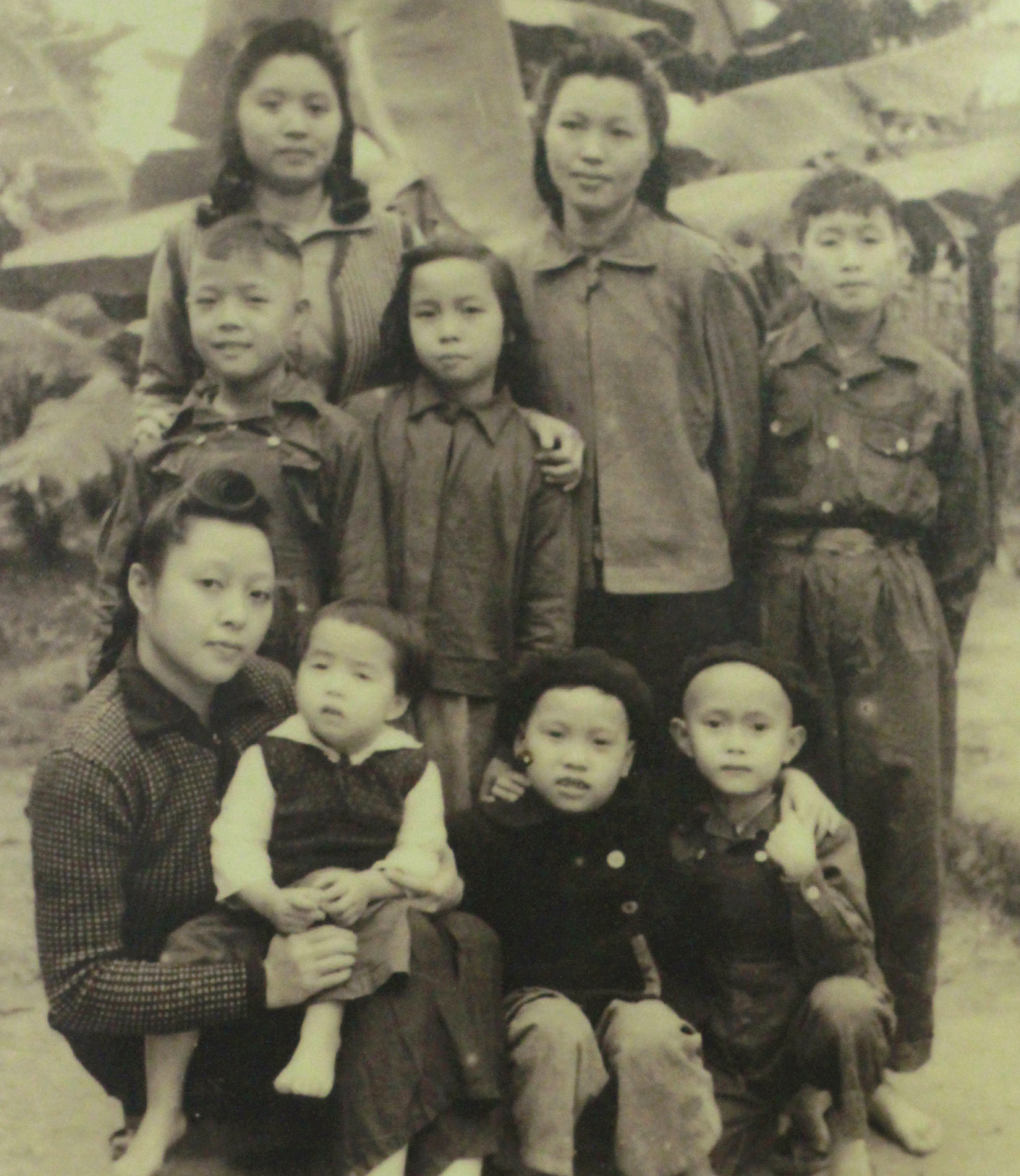 |
The 4 siblings Nu Hanh, Bich Ha, Nu Hieu, and Van Huy, children of Minister Nguyen Van Huyen.
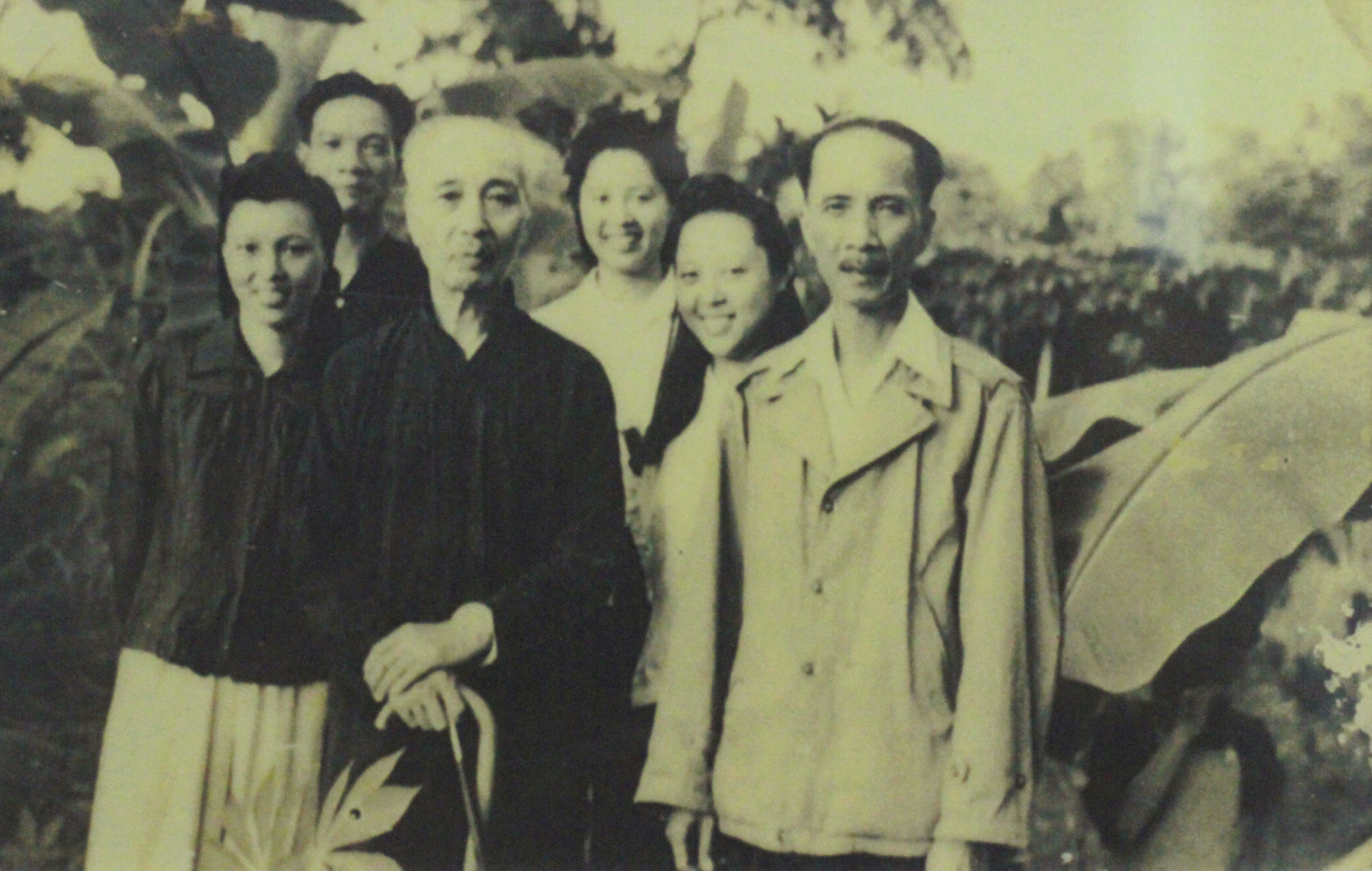 |
7 children of the 3 families who joined the resistance, from left: Nguyen Kim Nu Hieu, Ho The Lan standing behind (wife of Deputy Prime Minister Vu Khoan), Ho Dac Thuyen, Ton That Bach, Nguyen Van Huy, Bich Ha, Nu Hanh in Chiem Hoa in 1948.
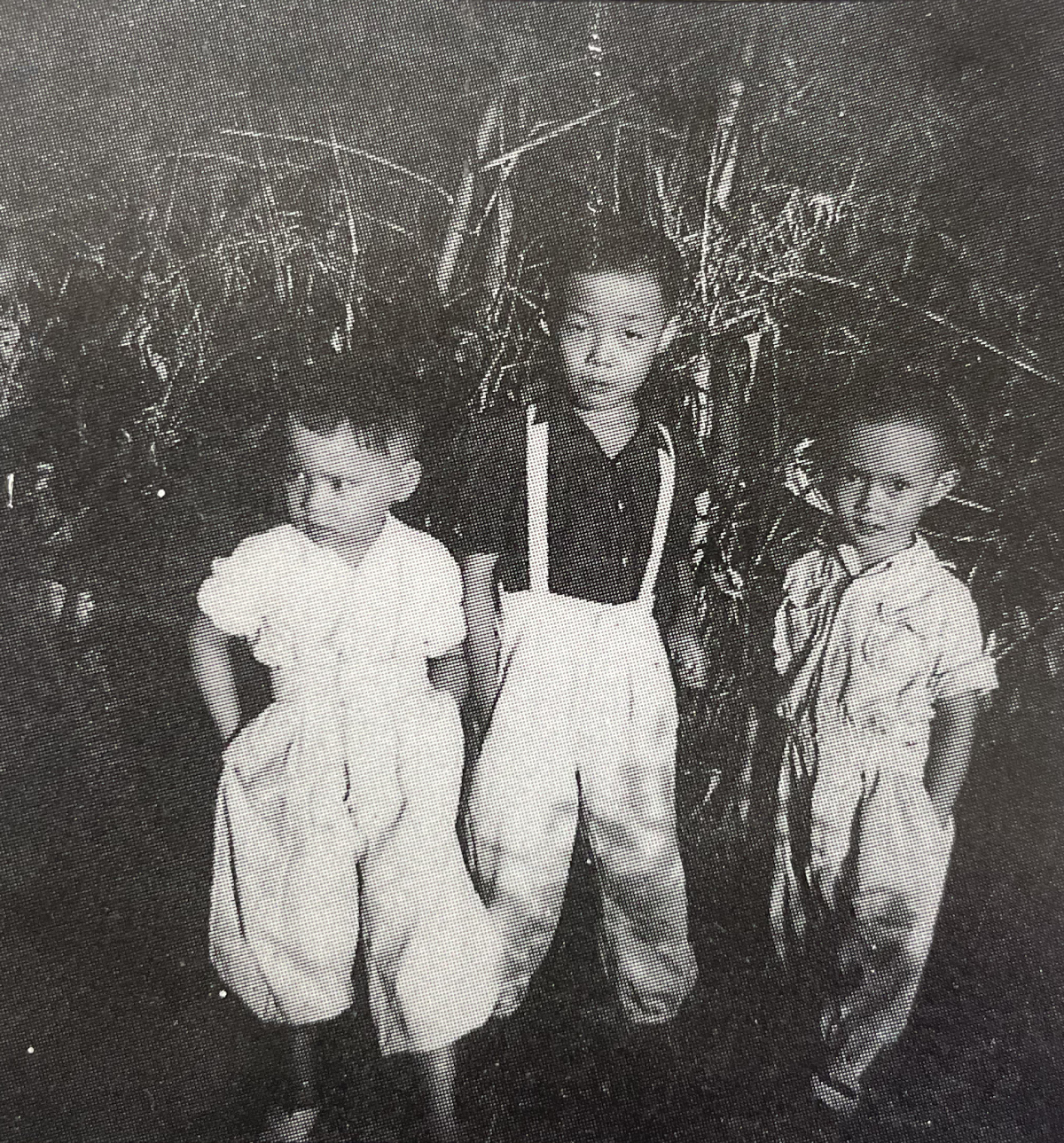 |
Huyen and his wife and children in Tuyen Quang in 1951.
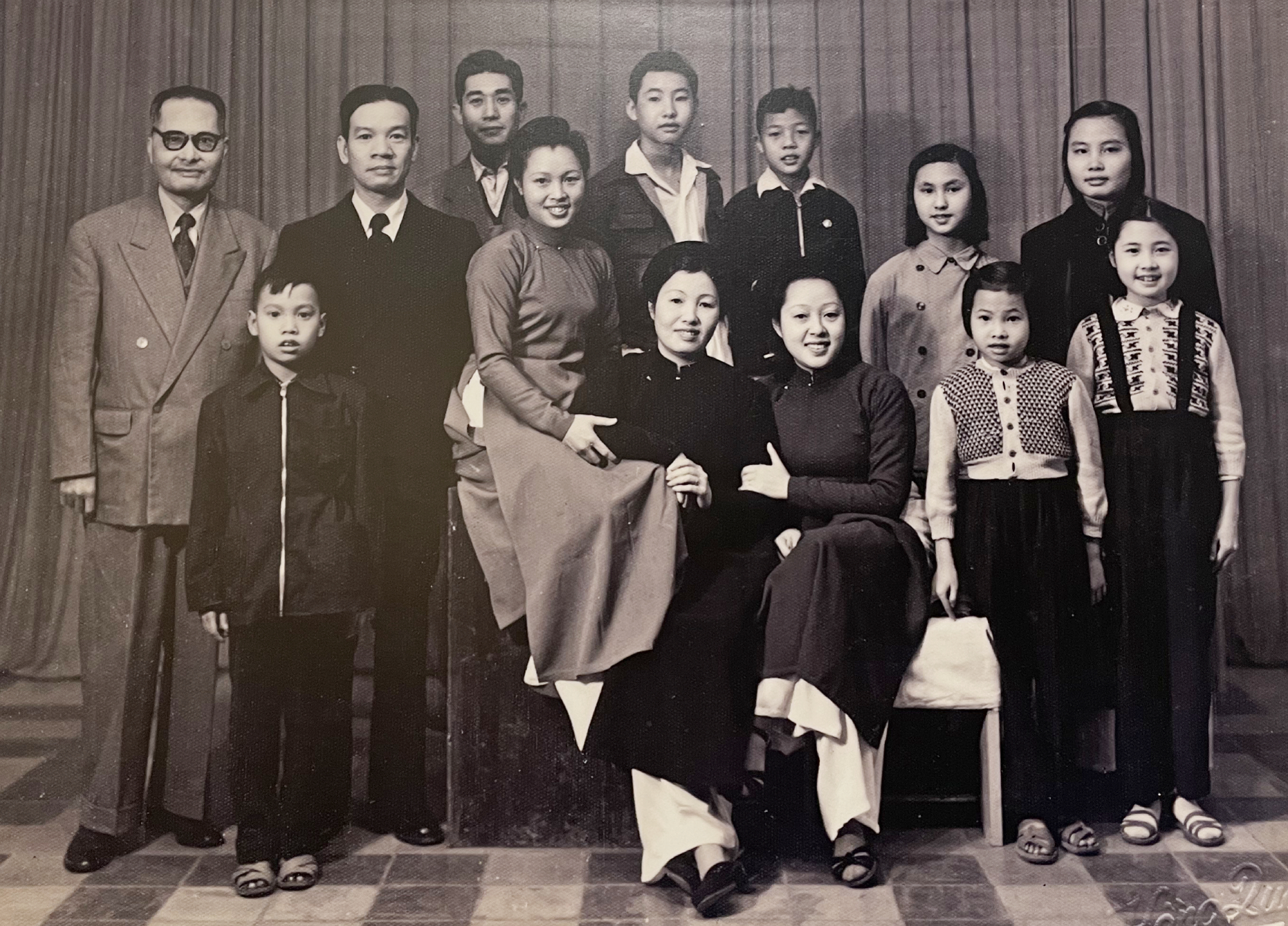 |
The 3 siblings, Vi Kim Ngoc, Kim Yen, and Kim Phu, with their husbands and children, welcome Duong Hong Bieu (3rd row, child of Duong Thieu Chinh and Vi Kim Thanh) to Chiem Hoa in 1953.
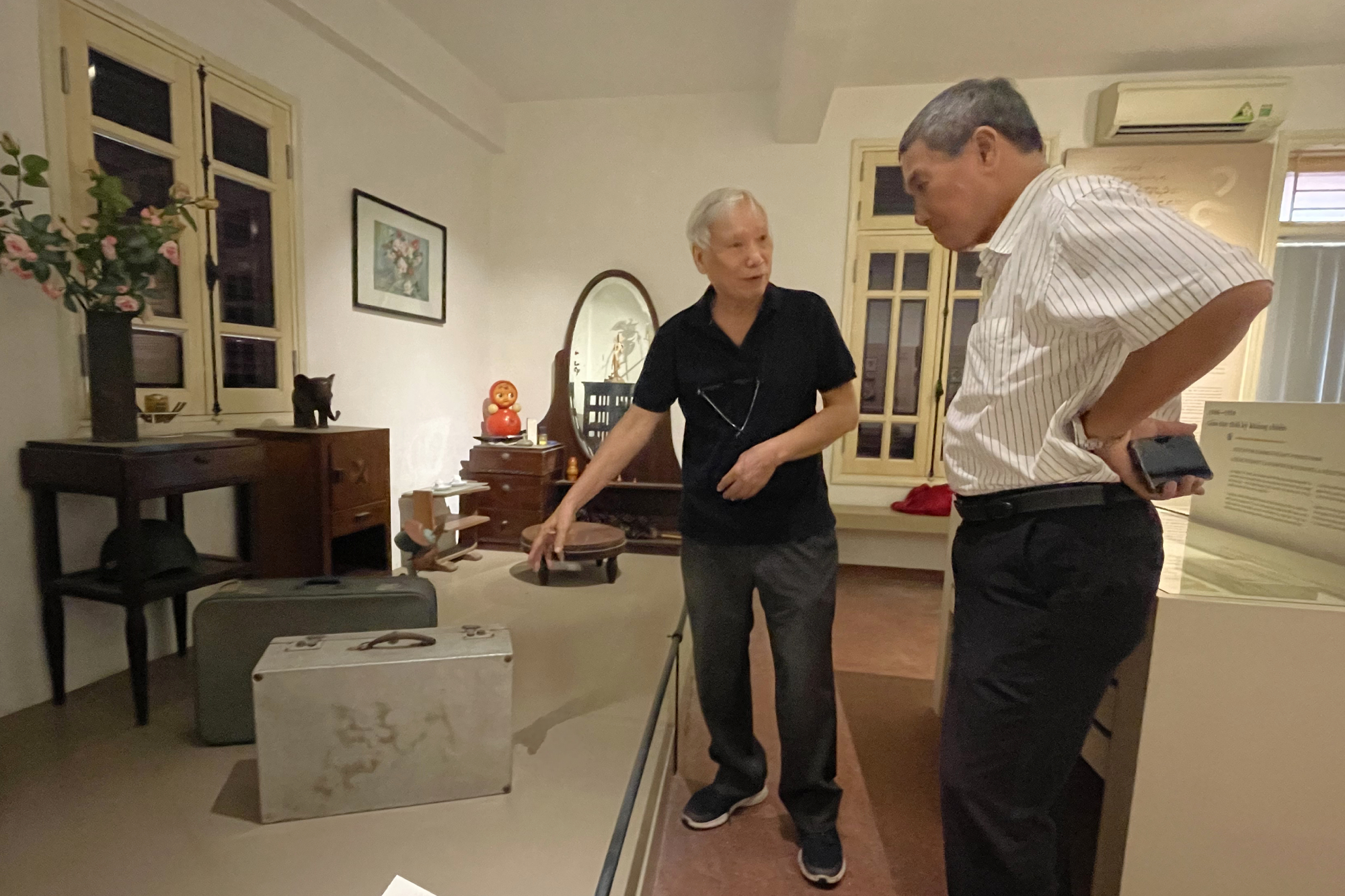 |
Vi Van Dinh visits his children and grandchildren at the Chiem Hoa resistance base in 1953. Pictured with his sons-in-law Ho Dac Di and Nguyen Van Huyen, his daughters Kim Ngoc, Kim Phu, and Nguyet Ho. The boy behind the banana leaf is That Bach.
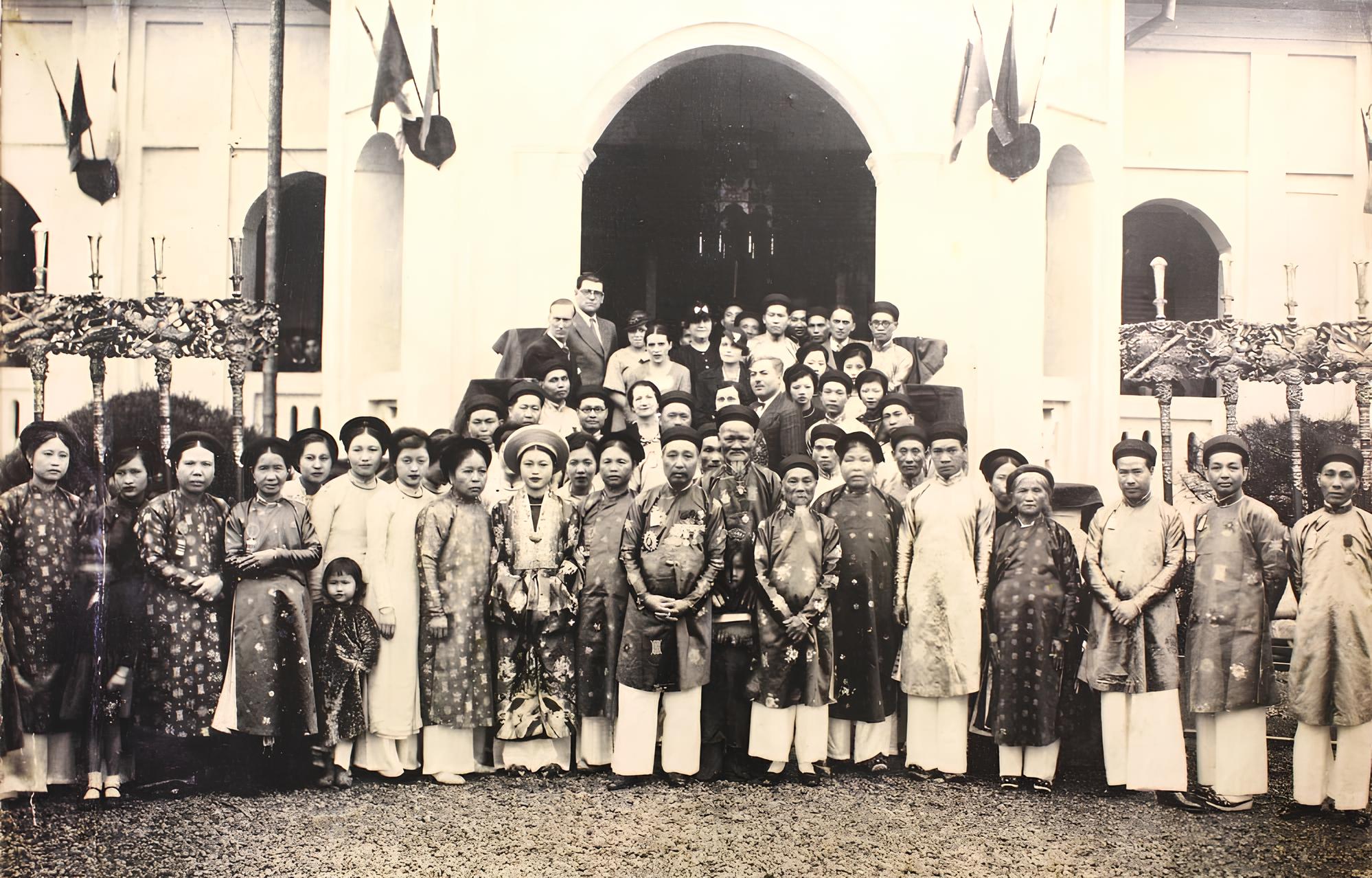 |
Nguyen Van Huy, Ho Dac Thuyen, and Ton That Bach in Thanh Thuy, Phu Tho in 1949.
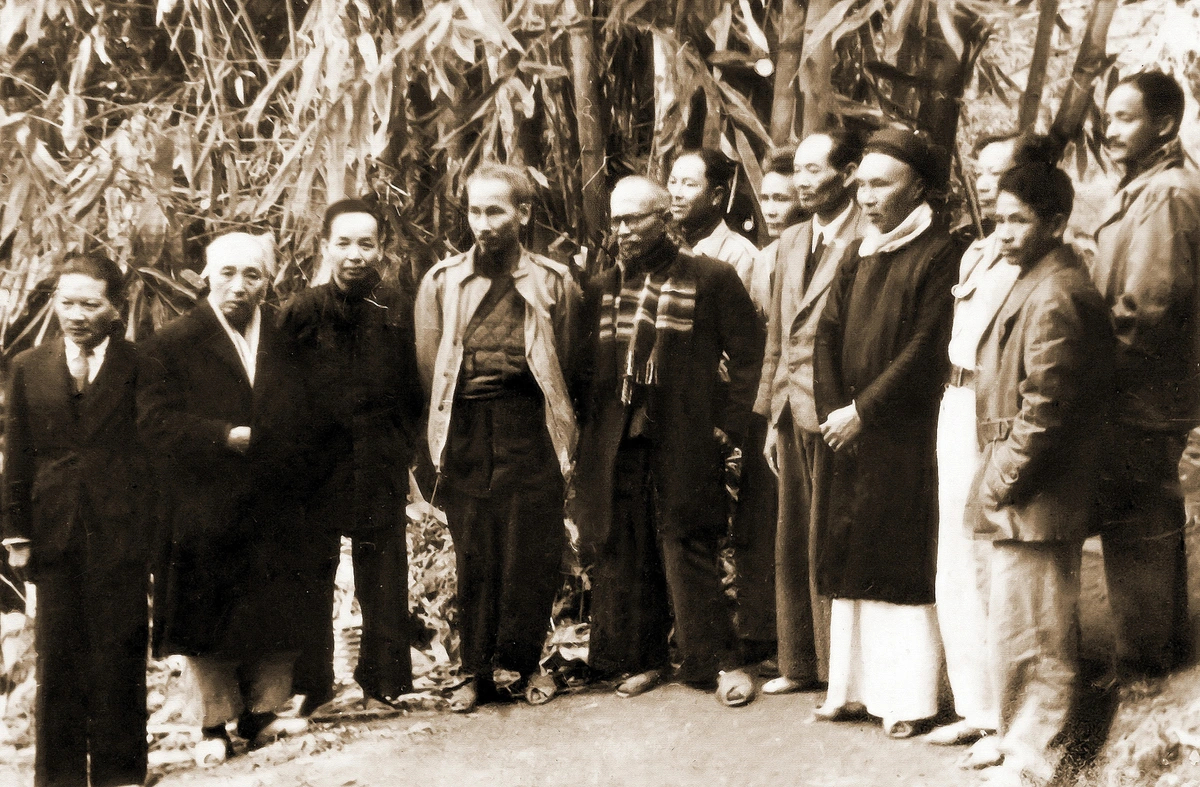 |
The 3 siblings, Kim Ngoc, Kim Yen, and Kim Phu, with their husbands and children, reunite after the liberation of the capital in 1954.
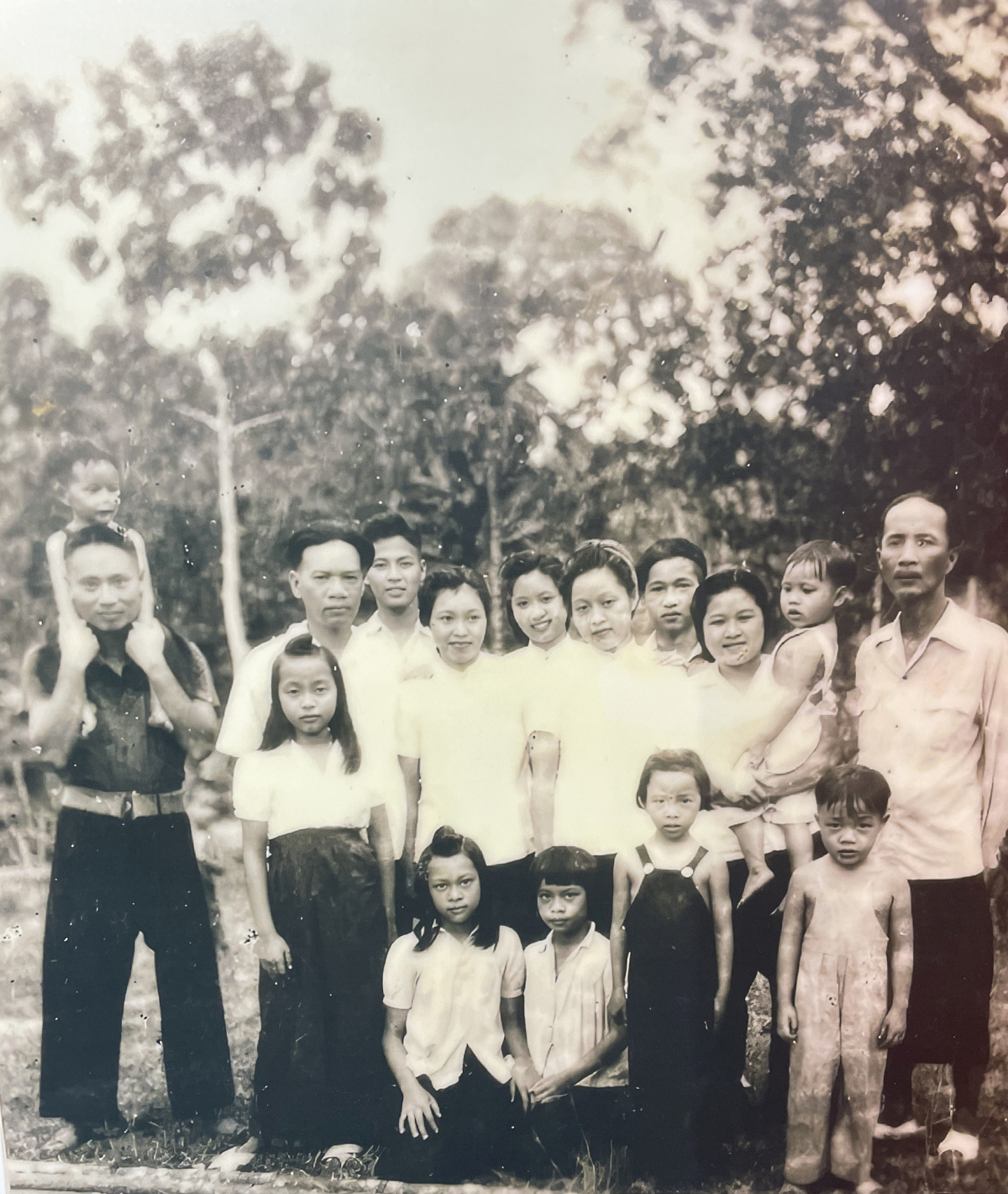 |
Nguyen Van Huy shows Nguyen Lan Vinh (grandson of Nguyen Van Vinh) the duralumin suitcase used by his mother, Vi Kim Ngoc, to store photos, letters, and diaries during the 9 years of resistance, at the Nguyen Van Huyen Museum in Lai Xa on 23/8.
Phan Duong




